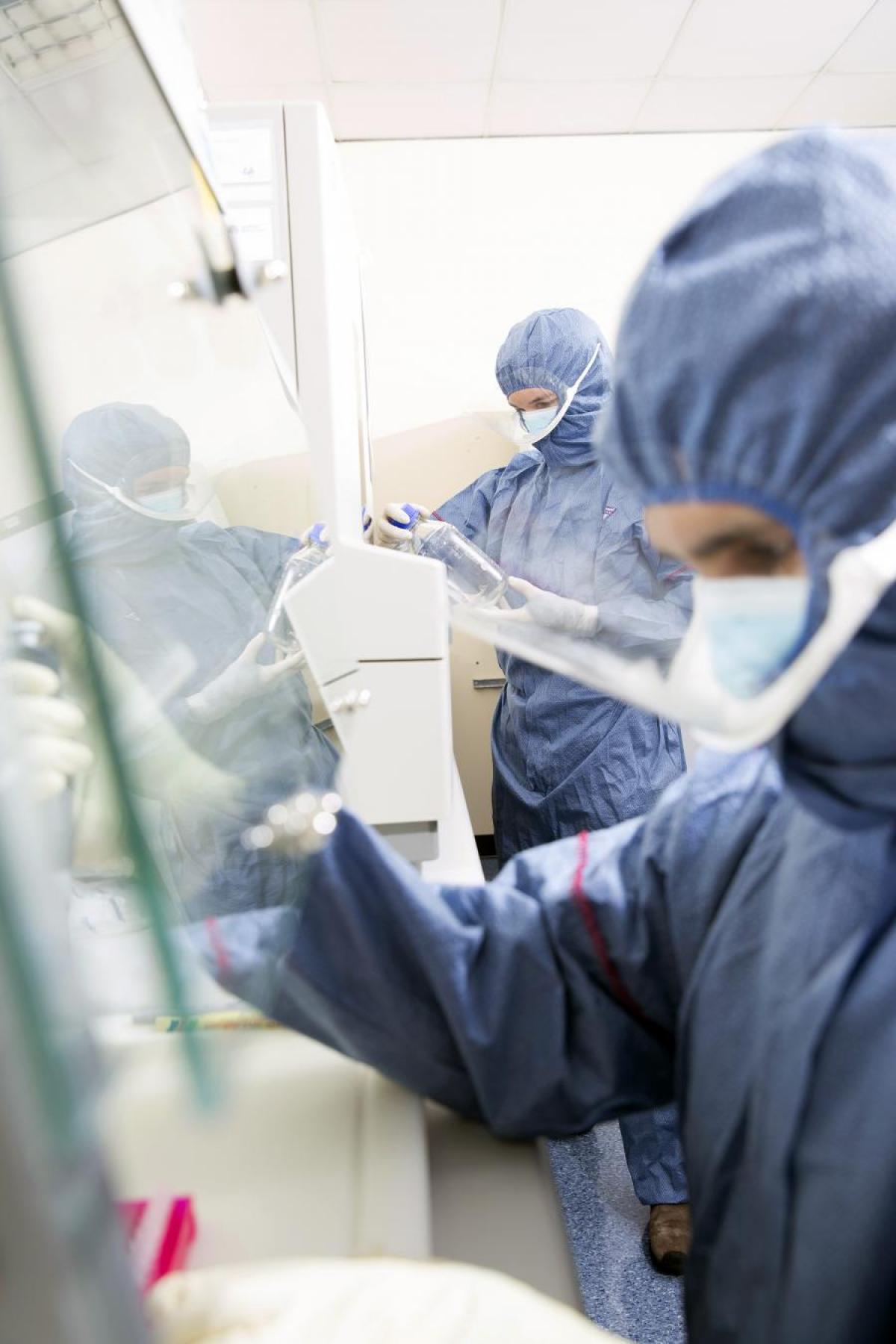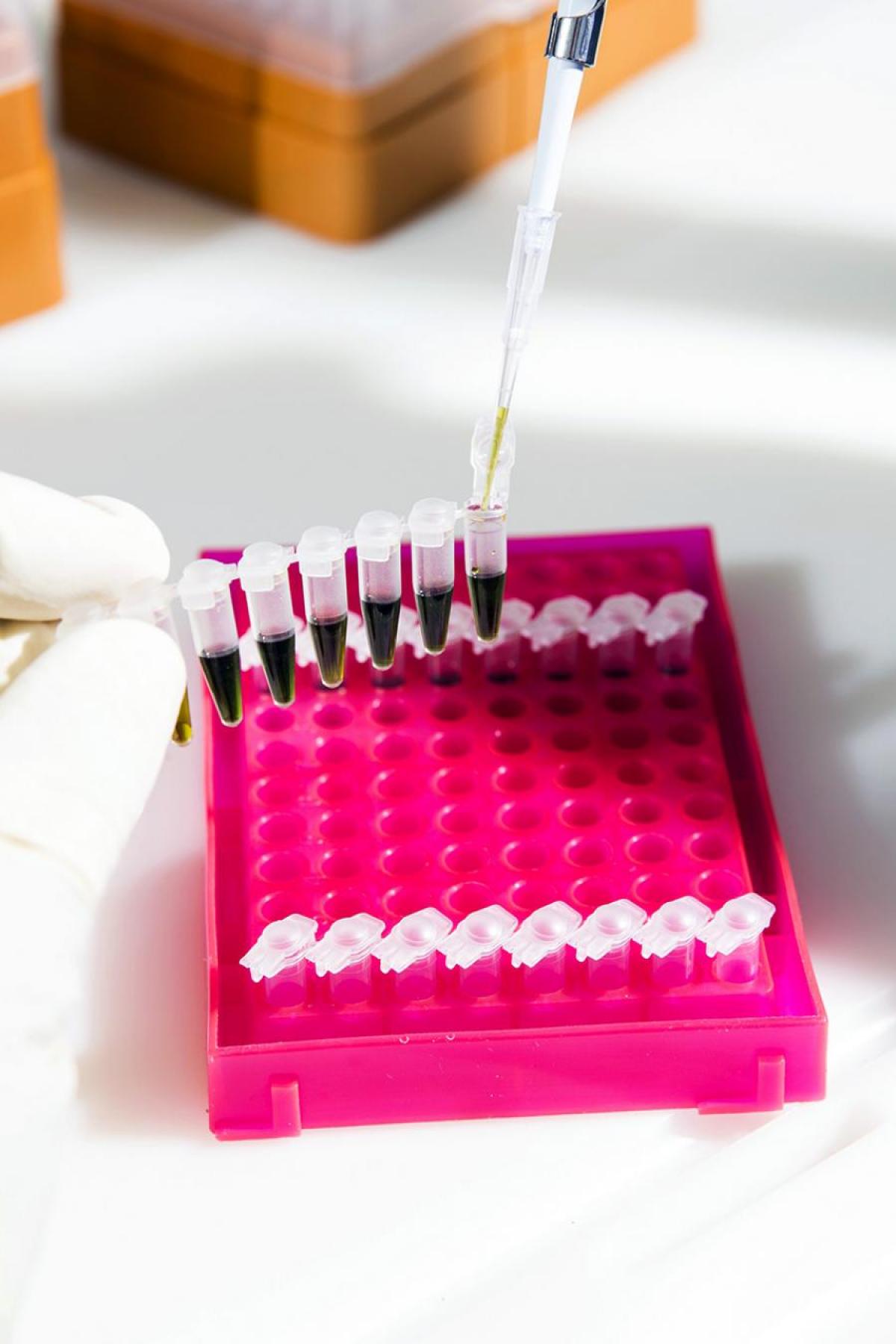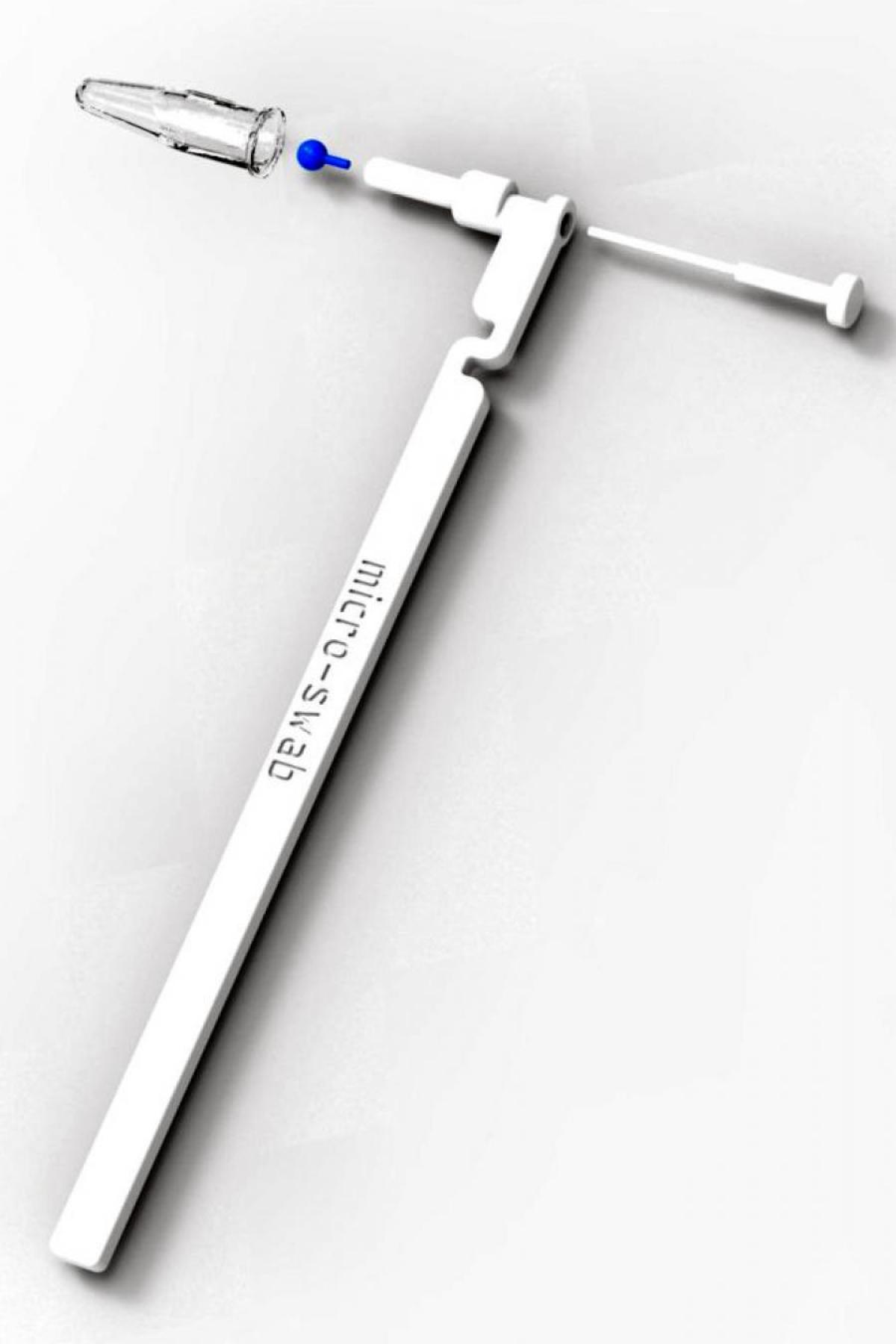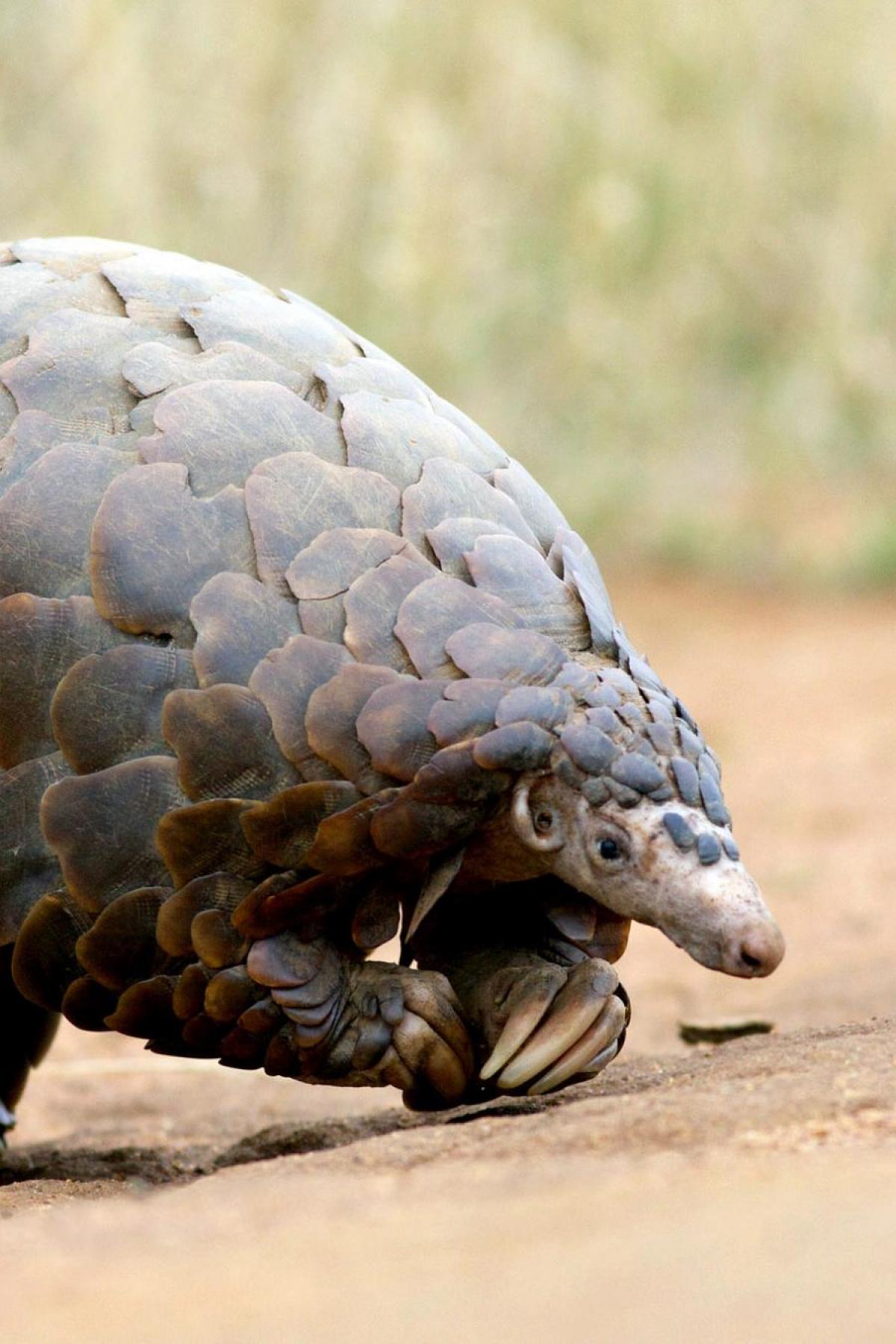Advanced DNA, Identification & Forensic Facility
The Advanced DNA, Identification and Forensic Facility (ADIFF) is a specialised network of forensic experts who apply cutting edge DNA technology and sophisticated chemical analysis to a broad range of biological samples.
We examine degraded human remains, plant and animal material through to environmental samples. Our techniques help to answer key questions related to crime scene investigation, missing persons, illegal trade, biosecurity and conservation management.
ADIFF is a member of the Australasian Environmental Law Enforcement and Regulators neTwork (AELERT)
Key contact: Dr Eleanor Dormontt
-
Facilities
Our purpose-built state-of-the-art laboratory in the Braggs building at the University of Adelaide, contains a sample preparation and DNA extraction laboratory with a separate PCR setup laboratory.
The facility is also fitted with a dedicated low-copy laboratory for processing samples with low DNA quantity and quality.
The facility utilises UV-airflow cleaner-recirculators and positive air-pressure and operates in accordance with NATA accreditation standards (ISO17025).
-
Major equipment
- EpMotion 5075 liquid handling platform
- QIAcube DNA Extraction platform
- Capillary Electrophoresis - Housed at Flinders University
- OMNI Bead Ruptor with Cryo Cooling Unit
- Agilent Bioanalyser 2100 Expert
- Promega Quantus Fluorometer
- AURA UV fitted PCR Workstations
- Pippin Prep
- EuroClone Safemate Biosafety Cabinet
- Milli-Q Integral Water Purification System
- Illumine Technology Suite at AGRF
Key services
ADIFF offer advanced tools to obtain genetic information from low quality, low quantity DNA samples, and has an internationally recognised Forensic Odontology Unit.
We offer a range of specialised tools for human identification when conventional forensic DNA techniques fail.
We help answer the key questions:
- Who was present at a crime scene?
- Are the remains human?
- Who do the human remains belong to?
- What was the biogeographical ancestry of an individual?
- What did the individual look like?
ADIFF specialises in the follow key areas of human identification:
-
Degraded remains
Sensitive tools to obtain genetic information from low quality, low quantity samples such as tooth, bone, and hair.
This group is led by Associate Professor Jeremy Austin who is an expert in ancient DNA analysis. Jeremy and his team at the Australian Centre for Ancient DNA (ACAD) have developed sensitive DNA typing techniques to extract informative genetic information from highly degraded human remains.
Analysis offered includes:
- HVS1 and HVSII sequencing
- Whole mitochondrial genome sequencing
- Mitochondrial DNA typing via SNP typing
- Y-chromosome DNA typing via SNP typing
- Biogeographical ancestry prediction
- Eye and hair colour prediction
Case studies
Jeremy and his team have applied these techniques to assist policing agencies in high profile investigations.

Daniel Morcombe case
In 2011, Jeremy was contacted by the Queensland Police to assist with the identification of remains related to the disappearance of Daniel Morcombe, eight years prior.
Three human bone fragments recovered from the Sunshine Coast were analysed for mitochondrial DNA and compared to that of Daniel's mother and brother. The results could not exclude the bones belonged to Daniel Morcombe.
Jeremy presented his results in the High Court and ultimately assisted in the prosecution of Brett Peter Cowan for the murder of 11-year-old Daniel.

Wynarka investigation
In 2015, the South Australian Police (SAPOL) reached out to Jeremy to assist with the identification of a child's remains that were discovered in an abandoned suitcase next to a highway in Wynarka, South Australia.
Again, Jeremy compared the mitochondrial DNA that he extracted from the remains to family reference samples. The results helped to identify the child as two-year-old Khandalyce Kiara Pearce.
Khandalyce and her mother, Karlie Jade Pearce-Stevenson had been reported missing in the Northern Territory on September 4, 2009. Karlie's body had been found in Belanglo State Forest in New South Wales in 2010 but the whereabouts of Khandalyce were unknown.
-
Forensic odontology
The application of dental science to identify individuals.
The University of Adelaide Dental School has a specialist Forensic Odontology Unit. Forensic odontologist Dr Denice Higgins is a highly experienced dentist with an international reputation. She has assisted in victim identification for the Victorian bushfires and Malaysia Airlines Flight 17.
The unit works closely with Forensic Science South Australia and various other policing agencies. It is involved in about 100 cases per year. These cases involve human identification from:
- Transport accidents and gunshot
- Incinerated victims in vehicle and house fires
- Bite marks inflicted by humans and animals
- Age assessment of both deceased and living persons
Research in this area also examines the DNA preservation in highly degraded samples and incinerated remains.
-
Trace evidence
Advanced methods to maximise STR profiling success from crime scene samples.
The Flinders University forensic biology team is led by Professor Adrian Linacre who is an internationally recognised forensic scientist with expertise in DNA profiling and blood pattern analysis.
Adrian is currently the National President of the Australian and New Zealand Forensic Science Society (ANZFSS) and is an editor of the journal Forensic Science International: Genetics.
Case studies

Micro-Swab
Adrian and his team have developed the Micro-Swab. This is a pen-like device that uses fibres soaked in a surfactant to bind DNA in fingerprints and increase DNA yield by 60% compared to conventional methods.
The device is set to help forensic experts extract relatively large amounts of DNA evidence from previously challenging surfaces such as gun triggers, ammunition cartridges and the spaces between keys on computer keyboards.
ADIFF applies specialised species identification techniques to both animal and plant materials for Illegal trade and biosecurity purposes. A key research theme is also the development of complex trade-analysis networks.
The global illegal wildlife trade generates between $7 billion and $23 billion in illicit revenue annually.
This trade can involve a range of criminal activities from trafficking and forgery, to bribes and use of shell companies. The illegal trade of wildlife is a serious ongoing risk to reputational border biosecurity.
CITES (the Convention on International Trade in Endangered Species of Wild Fauna and Flora) is an international agreement between governments that aims to ensure that international trade in specimens of wild animals and plants does not threaten their survival.
ADIFF offers species testing predominantly applied to CITES listed animal species to answer questions including:
- From which species did the material originate?
- Where is it from?
- Is it legal?
ADIFF specialise in the following areas, and are also world-leaders in the illegal trade of timber.
-
Species identification
Species identification is fundamental to tackling illegal trade of plant and animal materials. ADIFF's partner organisations, Australian Museum and Flinders University have developed and applied species identification tools for:
- illegal import and export of CITES listed plant and animal species;
- the domestic trade in nationally protected plants and animals; and
- differentiating captive vs wild caught animals, and cultivated versus wild harvested plants.
Case studies

World-first DNA technology to prosecute rhino horn poachers
The number of rhinos poached in South Africa is has dramatically increased over the past 10 years, from 13 in 2007 to ~1200 in 2015. Selling at $95,000USD/kg on the black market, the cost of rhino horn exceeds that of both silver ($45,000USD/kg) and gold ($50,000 USD/kg).
Professor Adrian Linacre from Flinders University, has developed a DNA detection tool that can quickly identify rhino horn.

Image: M Zhu
Is it a bird?
Bird strike - or more accurately in Australia, ‘wildlife airstrike’ - costs the aviation industry millions of dollars annually and represents an additional risk for airlines and airports to manage.
Our partners at the Australian Centre for Wildlife Genomics (ACWG) at the Australian Museum assist the aviation industry by carrying out DNA-based species identification of the wildlife involved in these strikes. ACWG have been working with commercial and defence airports since 2006 and have used DNA to identify 100’s of different bird and bat species involved in collisions with aircraft across Australia.

20,000 elephants killed for their ivory
Often large shipments of whole tusks are seized at the border. However, identifying which species of elephant the ivory originated is crucial. DNA tests can be used to determine the number of elephants killed and where they were poached.
ADIFF has developed a simple and quick DNA screening test to distinguish between African Bush elephant, Asian elephant and African forest elephant, or from another species such as hippo, narwhal and mammoth.
-
Trade network analysis
Working with enforcement agencies to assist in combating illicit transnational wildlife crime by developing novel statistical and mathematical approaches.
The growth and commercialisation of the internet has greatly modified the environment in which pet markets and illegal wildlife traders can operate.
Given the complex and cryptic nature of these online networks, the development of advanced web intelligence techniques are core to the successful disentanglement of the trade.
As these online platforms and networks grow, so too does the risk of biodiversity loss and new species invasions. Many of these activities go unreported and hence pose a serious emerging biosecurity risk. This creates special imperatives to identify hazards early, and to intervene cost-effectively.
Associate Professor Phill Cassey leads a research-intensive invasion ecology group at the University of Adelaide, and is director of Centre for Applied Conservation Science.
Associate Professor Cassey and his team aim to extract and tease apart the great deal of relevant online information that is available in order to assist biosecurity agencies and decision-makers to take early preventative action to protect the environment and economic activities including agricultural and social assets.
Case studies

Where did all the pangolins go?
The pangolin is greatly sought after for its various body parts, largely driven by demand from China. The mammal has been driven to the edge of extinction in Asia, with two Asian species listed as critically endangered in the International Union for Conservation of Nature Red List of Threatened Species.
With declining Asian pangolin populations, a shift in trade from Asian to African pangolin species has been suggested.
Using the CITES Trade Database, our researchers investigated global trends in pangolin trade at the species level between 1977 and 2014. An increasingly complex international network was identified through time, with the United States of America (US) being the dominant player in the global pangolin trade that was reported to CITES.
CITES trade in Asian pangolin species decreased through time, whilst trade in African species increased post 2000. The US was the most frequent trade country throughout the entire period and was the greatest importer of pangolins and their products.

Alien birds in Taiwan
The global trade in alien cage birds is flourishing. In 2008, BirdLife International estimated that in the 1990s, up to 5 million birds were involved in the global bird trade annually.
Species in the pet trade can become alien invaders if they are released or escape from captivity and subsequently succeed in establishing a viable population.
Taiwan has an extremely active trade in alien cage birds. More than 180,000 individuals of over 200 parrot species were imported there between 2001 and 2011, from 20 countries.
Associate Professor Cassey and his team used phylogenetic regression models to compare the traits of alien species recorded in the cage bird trade in Taiwan. The researchers investigated whether the birds have or have not subsequently been recorded at large in the wild. They also explored the traits of species recorded in the wild.
Alien species were more likely to be recorded as successfully introduced if they were commonly for sale in the Taiwanese pet bird trade, and possessed songs considered to be more attractive to people. Species that have been sold in the pet market for a longer period were also more likely to have been recorded in the wild.
ADIFF utilises physical, chemical and biological characteristics of environmental samples, such as soil and water to assist with environmental crime, crime scene investigations and conservation management.
We help answer key questions including:
- Was a suspect present at a particular crime scene?
- Is a biological material a potential biosecurity risk?
- Is a material being illegally imported or exported?
- Are agriculture, and industry introducing environmental pollutants?
- What are the preferred habitats of threatened species?
- Does the environmental microbiome influence public health?
-
Timber tracking
ADIFF have been instrumental in the implementation of scientific verification within international timber supply chains.
Deforestation is a major environmental problem with the legitimate or illicit logging of timber one of the significant influences to this.
The timber industry is a major driver with 10-30% of timber exports being illegal. For example, New Zealand imports around 1% of its domestic consumption. However, 2008 estimates claimed that over 10% of these are of questionable legality.
Advanced DNA analysis tools can be applied to timber samples for:
- species identification;
- geographical provenance of a sample; and
- individualisation for illegal logging and chain of custody analysis.
Professor Andrew Lowe and Dr Eleanor Dormontt work closely with The International Consortium on Combating Wildlife Crime (ICCWC). Specifically, they work with the United Nations Office on Drugs and Crime (UNODC) as part of an Expert Group on Timber Analysis.
As a result of this work. the UNODC best practice guide for forensic timber identification was published. This project was led by Dr Dormontt.
Case studies
DNA matching helps convict traders of illegal timber
A genetic individualisation tool was used to verify legal Bigleaf maple (Acer macrophyllum) products and facilitated the guilty plea from four United States defendants to all charges under the Lacey Act.
Read more Listen to radio interview
Identifying non-conforming building materials
Genetic tools have been used to verify species and region of origin of Australian sandalwood to help maintain the integrity of the timber trade and reduce illegal harvesting.
-
Plant identification
Plant identification applied to crime, biosecurity and conservation management.
Professor Michelle Waycott is the Chief Botanist at the State Herbarium of South Australia and professor of plant systematics. The state herbarium provides a valuable resource for plant identification.
Professor Waycott continues to be involved in forensic cases involving plant identification. She has delivered plant identification training to professional staff at South Australian Police (SAPOL) and Forensic Science South Australia (FSSA).
Professor Waycott is also involved in environmental pest and weed identification in terrestrial and marine realms for:
- Primary Industries and Regions SA’s (PIRSA) Biosecurity SA division;
- the state herbarium;
- the federal Department of Agriculture and Water Resources;
- natural resource management regions; and
- offers contract services for shipping companies.
ADIFF uses plant identification to answer key questions including:
- Taxonomic identification associated with a crime scene
- Identification of ‘stolen’ plants
- Provenance or population origin identification
- Advice on imported plant materials to customs
- Restoration projects
- Diet analysis for conservation
The key research areas we’re involved in include:
- Species concepts and identification of new species.
- Plant systematics, taxonomy, population genetics, marine plant biodiversity and biodiscovery.
- Molecular tool kit development for building high resolution reference libraries for uncharacterised species.
- Development of molecular markers enabling identification of species, subspecies, varieties, populations, individuals.
-
Soil analysis
Physical, chemical and biological analysis of soils for forensic science and restoration ecology.
Forensic soil analysis of highly individualistic soil characteristics can be used to link an object, person, or location to a crime scene.
Professor Rob Fitzpatrick is the founding Director of the Centre for Australian Forensic Soil Science (CAFSS). He has undertaken soil analysis to provide critical evidence in many investigations and inquiries.
Based on the extensive casework experience, the centre has published ‘Guidelines for Conducting Criminal and Environmental Soil Forensic Analysis’.
CAFSS traditionally analyses the physical characteristics and the inorganic fraction of soils. However, CAFSS involvement with ADIFF has enabled the integration of advanced soil DNA analysis techniques to analyse the biological soil fraction.
CAFSS is administered by CSIRO Land and Water in Adelaide, South Australia. It is a partnership between the following organisations:
- CSIRO
- Flinders University
- Forensic Science South Australia
- University of Adelaide
- National Institute of Forensic Science
- ChemCentre, Western Australia
- Ian Wark Research Institute, University of South Australia
- Australian Federal Police
- University of Canberra
Case studies
ADIFF has been involved in the following investigations:
- Similarities between mineral assemblages in soils on a shovel and quarry solved revealed the location of two buried bodies and solved a double murder.
- Analysis of soil minerals from clothing and vehicles in sexual assault and kidnapping cases.
- Identification of the possible overseas and/or Australian provenance of soil on boots, rakes, shovels and mattocks belonging to suspected terrorists.
The use of stable isotopes to identify the geographical origin of samples.
Dr Cesca McInerney uses stable isotopes to identify the geographical origin of a broad range of sample types such as hair, plant materials, explosives and drugs and pharmaceuticals.
Her research focuses on reading isotopic signatures from the rock record to understand the influence of past climate changes on ancient ecosystems. In particular, she explores how plant communities and terrestrial biogeochemical cycles reacted to periods of global warming in the geologic past as a potential analogue to future climate change impacts.
Dr McInerney analyses the stable isotopic composition of fossilised leaf waxes to reconstruct past climates and ecosystems. These leaf waxes are essentially molecular fossils that retain information for millions of years about the plants that made them and the environments they lived in.
In order to interpret these ancient chemical signatures, Dr McInerney also studies modern plants and soils as a means of calibrating the isotopic tools she applies to the geologic record.
